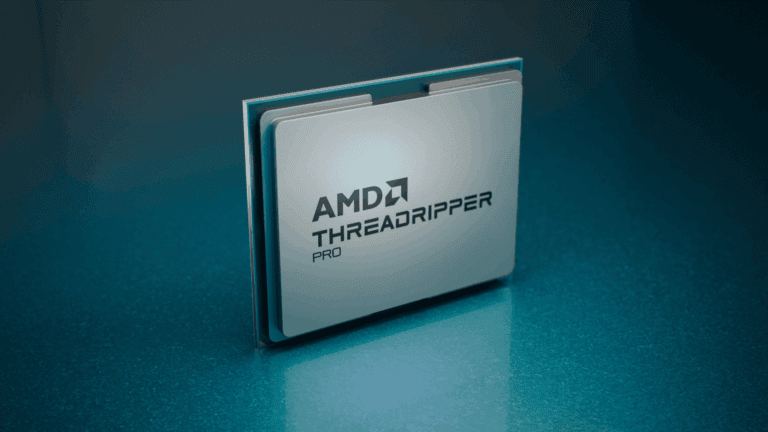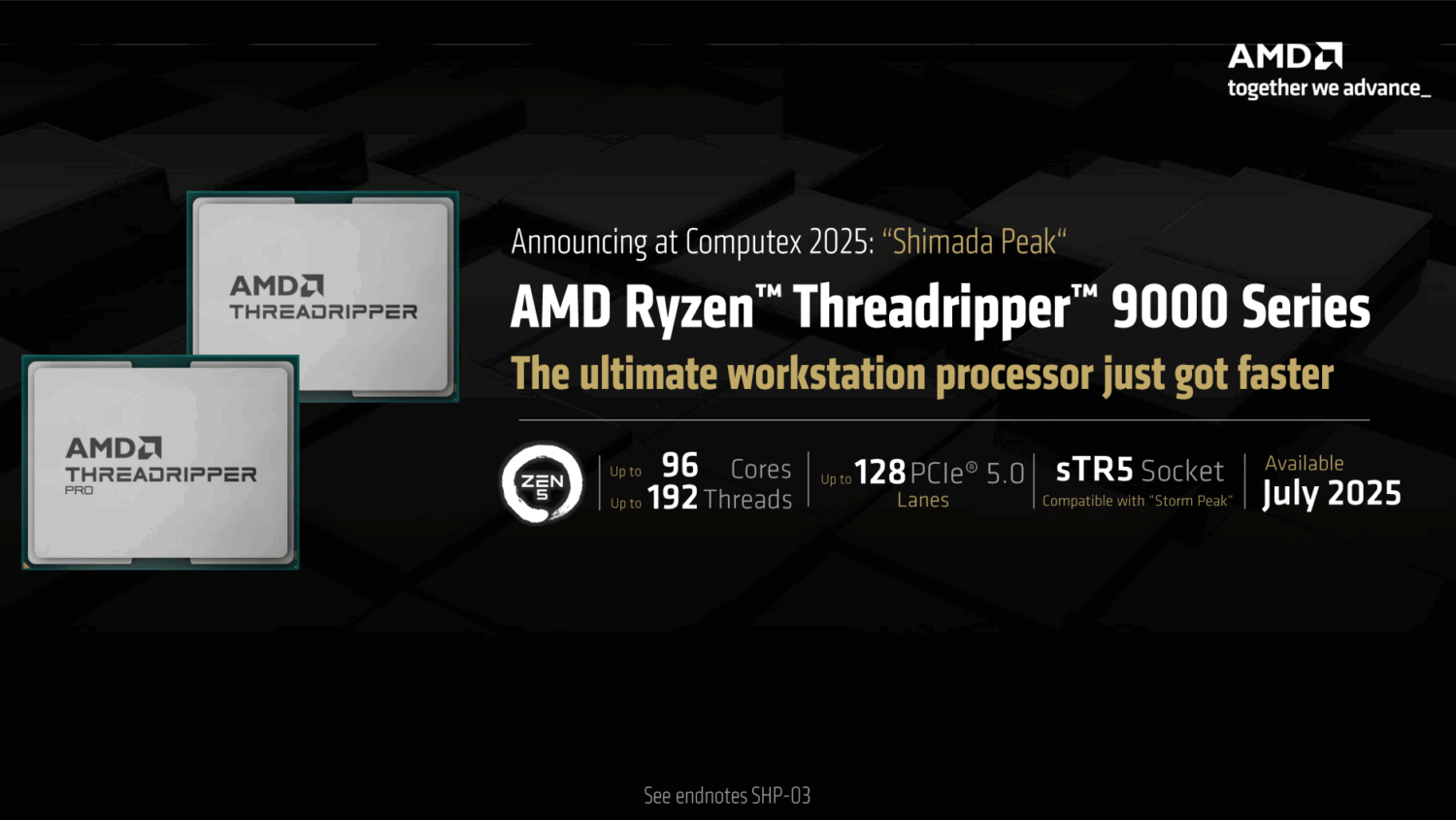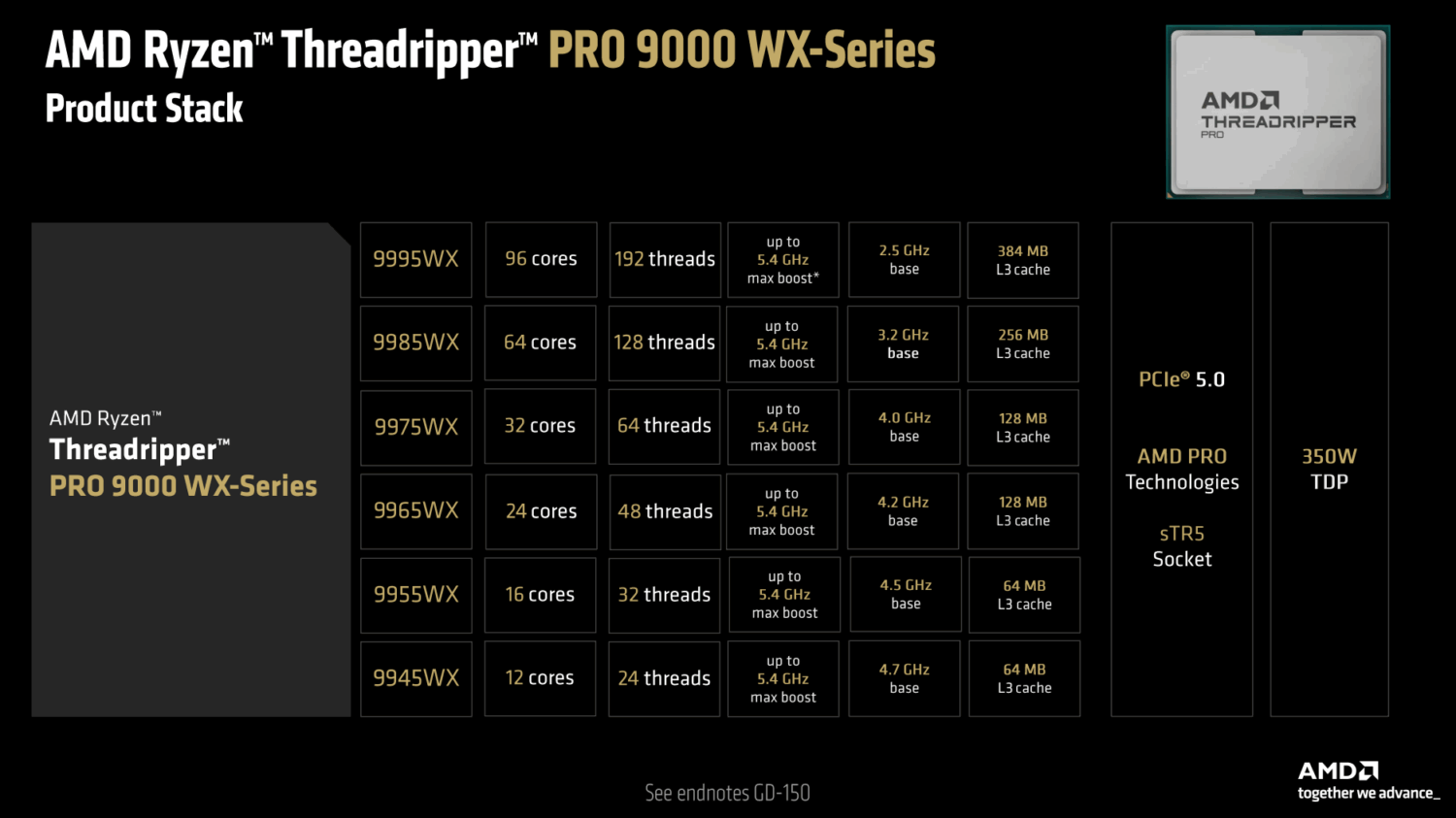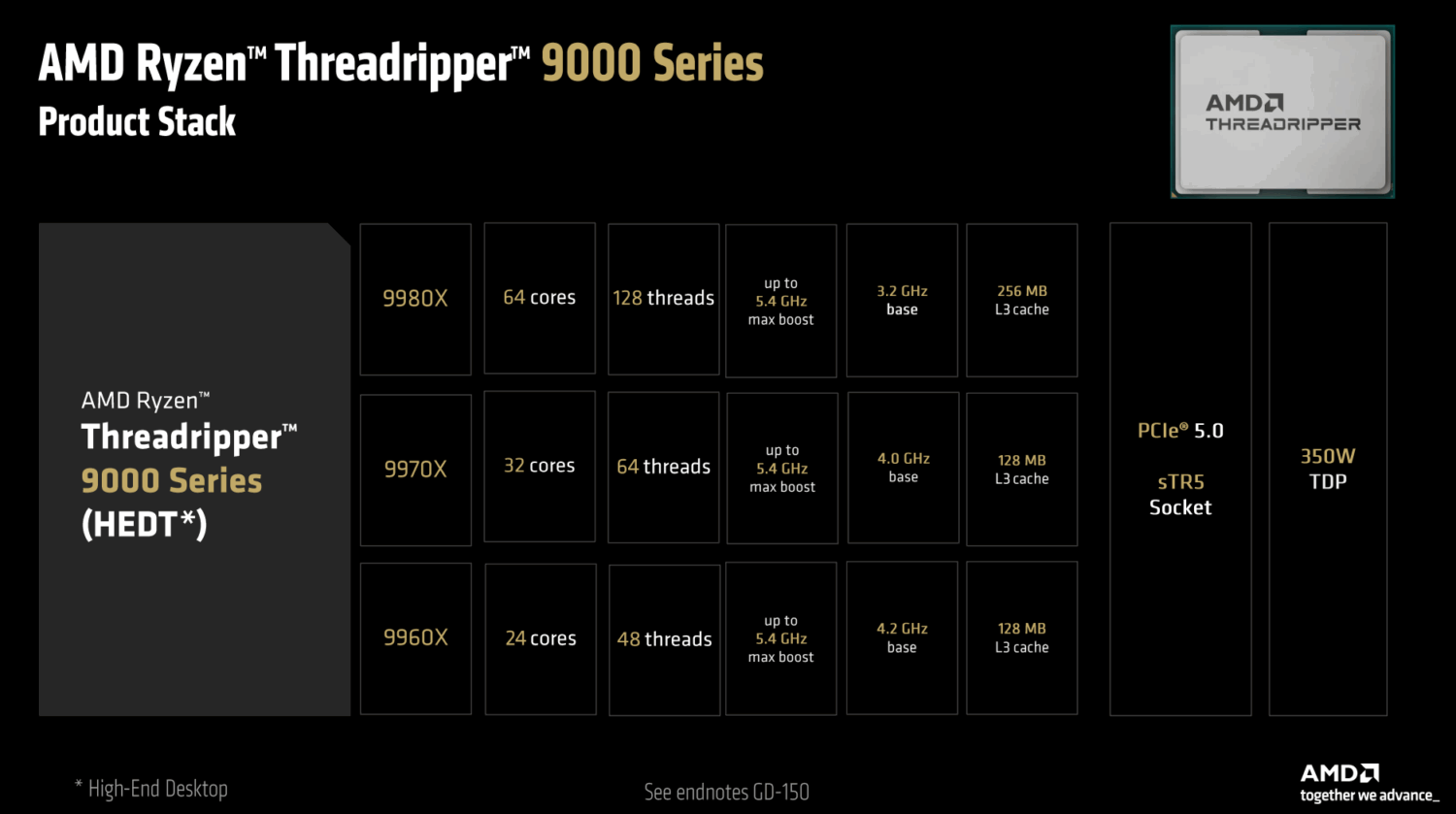In addition to AI PCs and GPUs for consumers, AMD is also using Computex to launch new Ryzen Threadripper chips and professional graphics cards. Familiar core counts meet increased DDR speeds, while Radeon AI PRO R9700 promises scalability for AI computing power.
The Threadripper and Threadripper PRO series are getting a long-awaited update after a year and a half. At first glance, the new workstation processors appear to be very similar chips to the previous 7000 series (8000 has been skipped). A maximum of 96 cores and 192 threads, 128 PCIe 5.0 lanes, and up to 384 MB of L3 cache are all specifications that have remained the same for the top SKU, here the 9995WX in the PRO series. For high-end desktops, the core count goes up to 64, with 256 MB of L3 cache.
Zen 5 efficiency and DDR5 acceleration
The biggest difference between the previous Threadrippers and the 9000 series is in the Zen 5 architecture, which replaces Zen 4. However, there is one change in the spec sheet beyond this point: the 8-channel ECC (Error Correcting Code) DDR5 chips can handle up to 6400 MT/s, compared to 5600 MT/s for the Zen 4-based Threadripper 7000 series.
Below is a summary of the latest Threadripper chips, which are expected to be available in July 2025 (the text continues below the images):
Radeon AI PRO R9700
Although AMD is not competing at the top of the consumer GPU stack, it is challenging Nvidia in the field of graphics cards designed for workstations. The newly announced AMD Radeon AI PRO R9700 features 32GB of video memory based on RDNA 4, the architecture behind the well-received RX 9070 and RX 9070 XT in the consumer domain. AMD promises that the new GPUs will excel in multi-GPU configurations. This is because the sum of the GPUs can run significantly larger AI models than a single chip, while ROCm support on Linux should close the gap with Nvidia’s CUDA.
The use cases for the new Radeon PRO range from local AI inferencing to fine-tuning and complex creative workloads. It is striking that AMD compares the chip to Nvidia’s consumer-oriented GeForce RTX 5080, which has only 16 GB of VRAM instead of 32. This means that far fewer large LLMs can run in memory, resulting in huge speed differences compared to AMD’s offering.



